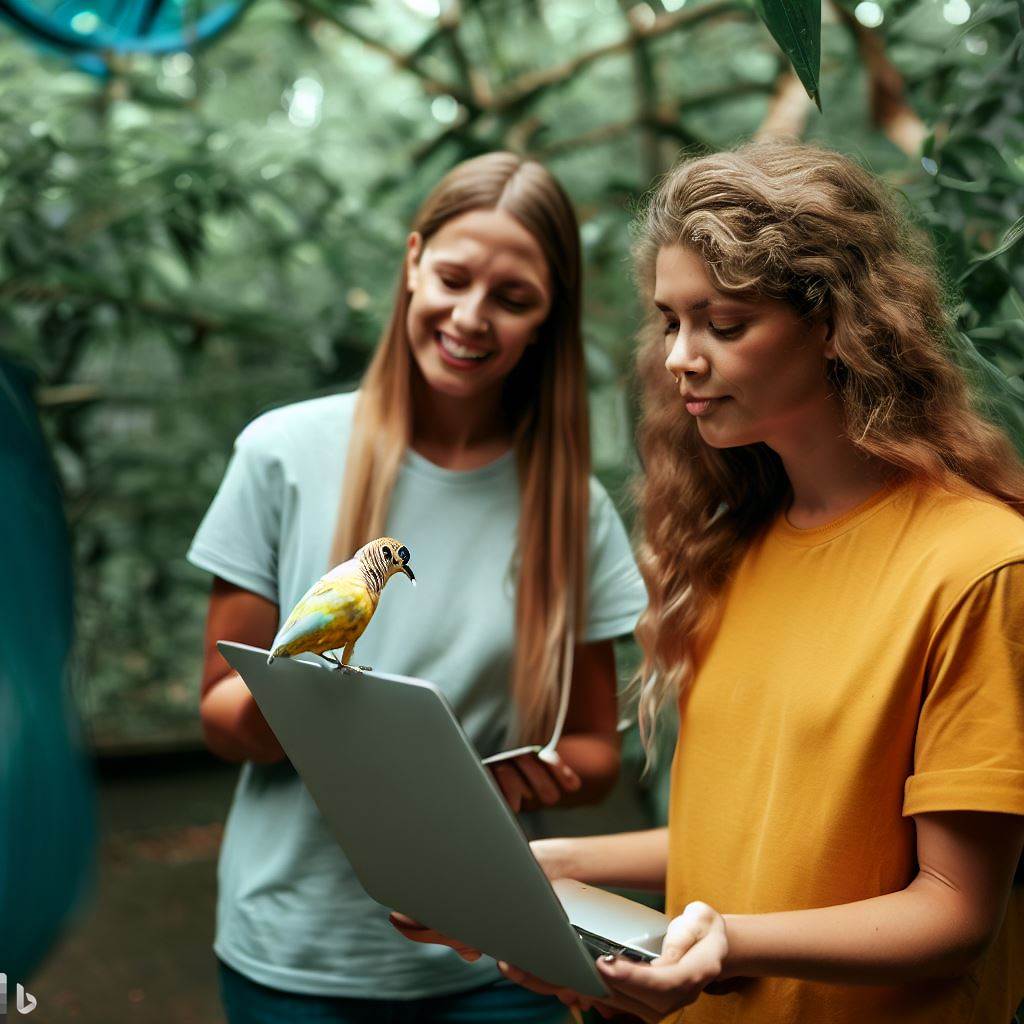Zoonotic diseases are diseases that are transmissable from animals to humans. Young children, elderly adults and individuals with poorly functioning immune systems are at the greatest risk of being infected by a zoonotic disease.
While there are a number of diseases which can be transmitted by companion birds, many are more likely to be transmitted by poultry or wild birds. If your bird has been examined by an avian veterinarian and is considered healthy, the risks of infection are significantly reduced.
The following diseases in birds which are of reasonable significance include: Chlamydiosis (Psittacosis) , Salmonellosis, Campylobacteriosis, New Castles Disease, Allergic Alveolitus, Mycobacteriosis (Avian Tuberculosis), Influenza, Giardia, and Cryptosporidiosis.
Chlamydiosis (Psittacosis or Parrot Fever) and Salmonellosis were discussed in last month’s article, Zoonotic Diseases – Part I. Part II covers Allergic Alveolitus, Campylobacteriosis and New Castles Disease.
Allergic Alveolitis
Allergic alveolitis has a number of names among which include hypersensitivity pneumonitis, parakeet dander pneumoconiosis and pigeon lung disease. It occurs in people who are hypersensitive to feathers, feather dust, and fecal material — expecially from pigeons and budgies. Signs can occur within two years but often take as long as 10 – 20 years with continued exposure.
It may occur in an acute, subacute or chronic form. The acute form occurs within 4 – 8 hours of inhalation of a high level of feathers, featherdust and/or feces. Coughing, difficulty breathing, chills and fever occur. If exposure is stopped at this time, no treatment is necessary and the signs will disappear. The subacute form results from long term exposure. A dry cough and progresssive breathing difficulty occur. This form may also be reversed if continued exposure is stopped. If continued exposure occurs, a chronic, nonreversible form occurs — leading to progressive difficulty breathing, a dry cough and weight loss.
Allergic alveolitis decreases lung capacity and causes impaired diffusion of air through the alveoli of the lungs.
Although this disease is thought to occur in genetically predisposed individuals, one can take certain steps to minimize dander in the environment. These include cleaning cages daily, bathing birds frequently, avoiding overcrowding, providing good ventilation, and using an air purification system.
Campylobacteriosis
Campylobacteriosis is caused by Campylobacter jejuni a gram negative, nonsporeforming motile rod. It can affect people and a variety of animals — especially psittaciforms (parrots), and passeriforms (finches and canaries). This bacterial organism lives in the small intestine (jejunum, ileum) and colon and may be isolated from clinically ill as well as clinically normal birds. Free-living wild birds maintain and spread the disease by the fecal-oral route. Clinically ill birds develop hepatitis, lethargy, loss of appetite, weight loss and yellow diarrhea. Mortality may be high.
People may become ill from eating contaminated poultry and poultry products. People develop cramps, fever, diarrhea and headaches within 2 – 5 days of exposure. Pregnant wormen, debilitated individuals and the immuno-compromised are at the greatest risk. The risk is primarily from contaminated poultry rather than from pet birds. A blood test, culture and isolation of the organism from the feces may be used to diagnose the disease. Recovery occurs with appropriate antibiotics and support occurs within 7 – 10 days. Fecal cultures may be done to screen birds for camphylobacter.
New Castles Disease
New Castles Disease is a paramyxo virus that can affect birds and people. It is more commonly seen in wild birds. The virus is shed through oral and respiratory secretions and through feces. It causes respiratory signs, diarrhea and neurologic signs — such as tremors, abnormal head position, circling and seizures in birds. Some birds may recover while others die.
The people who are at greatest risk are those who work in poultry processing plants or those who handle diseased wild birds. Incubation in people is only 1 – 2 days. Conjuntivitis, chills, fever and lethargy may develop. Recovery generally occurs within 3 weeks.
Diagnosis in birds and people is by virus isolation. There is no specific treatment other than support — fluids, rest, adequate nutrition.
Detailed information on Avian Tuberculosis will appear in Zoonotic Diseases – Part III in next month’s issue.

